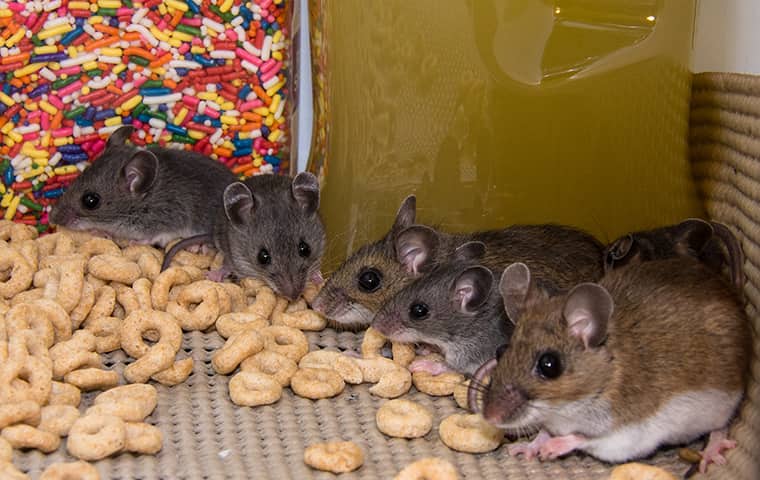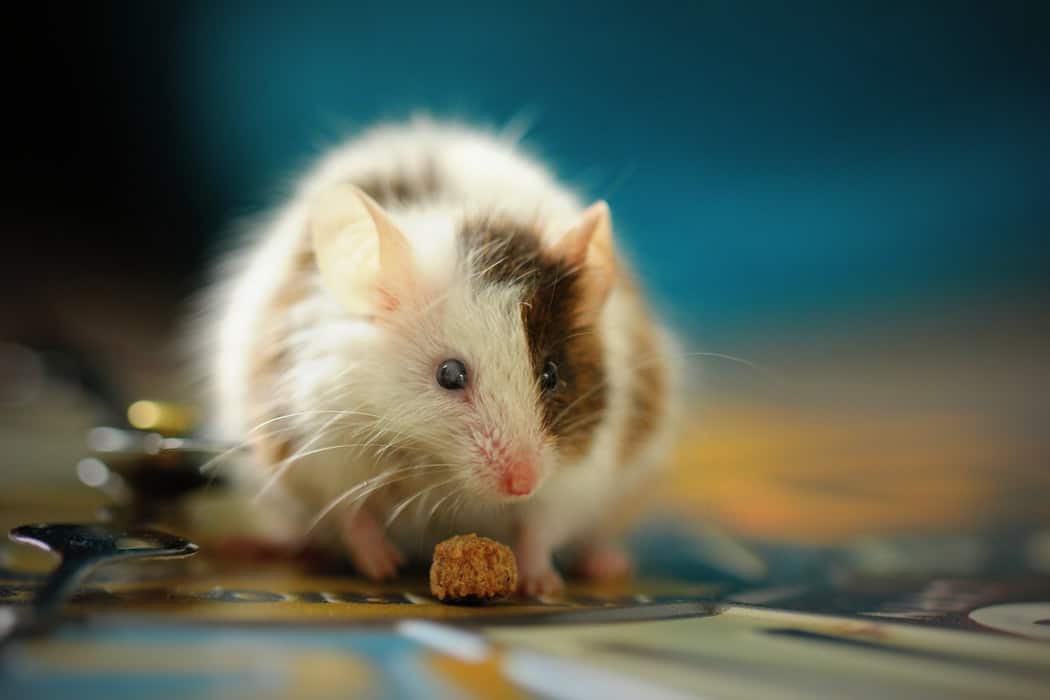Table Of Content

If you have an infestation of mice, it is possible that there are other pests taking advantage of the holes created by them. Rats, cockroaches, and spiders all like to live in dark spaces just like mice do, where they can hide from predators and hunt for food without being seen. It is important to keep an eye on these types of pests as well as mice to ensure that they aren’t causing any damage or spreading disease through your home. Mice droppings are small and round, about 1/8 inch (3 mm) in diameter. You can find them near areas where mice like to hide such as behind baseboards, under cabinets or appliances, on window sills, and in corners around the outside of your home.
How to get rid of mice - Reviewed
How to get rid of mice.
Posted: Fri, 26 Aug 2022 07:00:00 GMT [source]
Pests
If mice are desperate enough or curious enough, they may sneak their way into your home through the plumbing. They can crawl through the bathtub and sink drains, eventually making their way into the walls, basement, or attic. In addition to Hantavirus, mice can also carry other harmful bacteria and viruses.
Newland House Museum

In some cases, evidence of a rodent problem could all be down to your sense of smell. Even if you haven't seen any critters in your house, the stench of dead mice may have accumulated in the interior of your walls. A dead mouse should not be left to rot inside your wall, because its corpse could soon attract fleas.
Limit Access to Nesting Materials
Rodent bait and mouse traps are DIY methods that are often used by homeowners to get rid of mice and rats. Mouse traps are one of the most effective ways to get rid of mice that have taken up residence inside your home. Place mouse traps in the more vulnerable areas of your house, like along walls and behind trash cans.

Nothing can be more unsettling than knowing there’s nothing you can do on your own about rodents moving around inside of your wall, without tearing down portions of your walls. Let’s break down the top 5 reasons why you have mice in your walls. A strong correlation exists between mice in the walls and mice in the attic. Often times mice enter the home at lower entry points and from there go up or down. Both mice and rats are very good climbers, and they can even ascend straight up a vertical surface if the texture is rough enough. They can also jump up to 18 inches and slip through surprisingly small cracks and holes, making them very difficult to catch.
PEST LIBRARY
It’s located in Los Angeles, and the iconic view you get from the street makes it well worth the trip. Los Angeles is a vibrant and active city, and one area it thrives is its architecture. Whether you’re looking for architectural masterpieces, iconic landmarks, or homes from movies and TV shows, Los Angeles has it all. The house is open for guided tours without appointment most Saturdays.
Mice breed quickly and, if left to their own devices, can quickly take over your home and cause structural damage. Bleach’s strong smell is a natural repellent for mice—and it comes with the added benefit of sanitizing germ-infested areas that mice have inhabited. Toothpaste may emit that peppermint scent that confuses mice and masks their pheromones. Plus, it’s also poisonous to mice if eaten, which is why many homeowners mix it with sugar as a bait that kills mice.
They also shred items in order to create nests for their young, and gnaw on hard materials to keep their incisors ground down. To prevent mice from entering your home in the first place, seal up any cracks or holes in your walls, floors, and foundation. Keep food in sealed containers, and clean up any spills or crumbs immediately. By taking these steps, you can help prevent a mouse infestation and keep your home pest-free. To prevent future infestations, it is important to seal up any cracks or holes in your home where mice may be entering. This includes sealing gaps around doors and windows, as well as repairing any damaged screens or vents.
Delta Boeing 767 jet that dropped emergency slide is 33 years old -- well past normal age for active airliner: experts
Mice can destroy insulation, chew through electrical wiring, and lead to serious illness. If you suspect a mouse infestation, take action quickly to avoid further property damage and sanitation concerns. Since mice can squeeze through the tiniest of gaps, it’s crucial to seal any open entry points to your home in order to prevent mice from making it theirs.
Check around pipes, water heaters, furnaces, and other places where it might be easy for them to get into the wall cavities. Seal up any gaps that you find using steel wool or silicone caulk or another material that will not allow mice to chew through it easily. The D-Con No View Covered Mouse Trap is a humane way to get rid of mice without having to see them. Below are some of the top products we recommend for how to get rid of mice in walls, not house issues.
The most important thing is to treat the situation as if you have a mouse infestation problem. Store your kitchen food in rigid or hard containers because mice can easily chew containers of low quality. Fix all potential water leaks, especially from the basement or attic. Follow our guides to decide which mouse trap bait to use and set up your mouse traps (once you have them).
Mice can be very sneaky and may not always leave droppings in plain sight. They may also be using a specific area of your home as a nesting place, which may not be where you’re seeing other signs of their presence. Other signs of mice to look out for include gnaw marks on food packaging or other items, chewed wires, and strange noises such as scratching or scurrying sounds. If you notice any of these signs, it is important to take action to eliminate the mice from your home.
A general estimate is that it could cost anywhere from $200 to $600. Mice repellents are meant to deter mice from entering your home. Natural substances such as peppermint oil, mothballs, and ammonia and chemical sprays might work by giving off odors that mice don't like.
Mice are nocturnal creatures, so you may hear scratching noises in the walls or ceiling at night. These noises are caused by mice running, climbing, and gnawing on objects. You may also hear squeaking or rustling sounds, especially if there is a nest nearby.
Set humane live traps in areas where you find mice droppings or other evidence of mice. Check them frequently, because mice can't live for very long in the small space of the trap. Make sure you have taken all the steps to prevent them from coming back in again. Mouse droppings and tracks are often visible in homes experiencing mice infestations. Holes are also visible in walls, floors, ceilings, and foundations.
However, the most common mouse to invade your home and get inside your walls is the house mouse. If you are not sure, then stick a drinking glass to the wall and listen. When you realize that mice have made your walls a haven, you should take control measures as soon as possible.

No comments:
Post a Comment